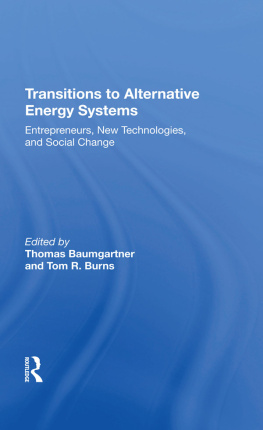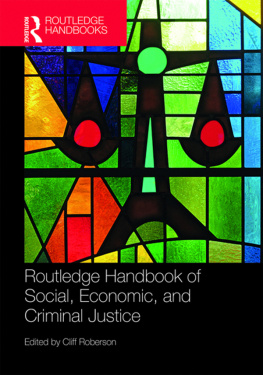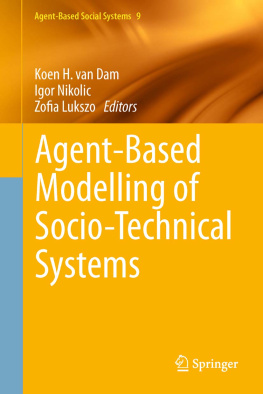First published in 1986
This edition first published in 2015
by Routledge
2 Park Square, Milton Park, Abingdon, Oxon, OX14 4RN
and by Routledge
711 Third Avenue, New York, NY 10017
Routledge is an imprint of the Taylor & Francis Group, an informa business
1986 Gordon and Breach Science Publishers S.A.
All rights reserved. No part of this book may be reprinted or reproduced or utilised in any form or by any electronic, mechanical, or other means, now known or hereafter invented, including photocopying and recording, or in any information storage or retrieval system, without permission in writing from the publishers.
Trademark notice: Product or corporate names may be trademarks or registered trademarks, and are used only for identification and explanation without intent to infringe.
British Library Cataloguing in Publication Data
A catalogue record for this book is available from the British Library
ISBN: 978-0-415-72731-0 (Set)
eISBN: 978-1-315-76997-4 (Set)
ISBN: 978-1-138-78399-7 (Volume 63)
eISBN: 978-1-315-76339-2 (Volume 63)
Publishers Note
The publisher has gone to great lengths to ensure the quality of this reprint but points out that some imperfections in the original copies may be apparent.
Disclaimer
The publisher has made every effort to trace copyright holders and would welcome correspondence from those they have been unable to trace.
Foreword
The Shaping of Socio-Economic Systems was first published in 1986. It followed the publication of an earlier volume (Burns et al., 1985), which presented the theoretical framework of actor-system dynamics approach (ASD). The conceptualization developed in the 1985 book laid out the foundations for empirically oriented research. The new theoretical framework was used to analyze a variety of scientific and policy problems from a multi-disciplinary and dynamic perspective: the complex interplay between economic and socio-political institutions, conflicts and struggles over economic resources and economic institutions, problems of development and under-development, and inflation and unemployment. The result of this research was the publication of this book. The reprint of this book gives us the opportunity to reflect on its foundations and relevance after almost 30 years. The books major underlying themes are:
Conflict over economic institutions and policies and over the distribution of economic resources.
The structural bases of economic inequality and conflictand their instability.
The shaping and reshaping of socio-economic institutions and the contradictions and conflicts and instabilities which such developments evoke.
The failure of orthodox economic theories, including Keynesianism, in the face of recurrent economic crises and instabilities.
All of the papers collected here deal, in some sense, either with social power, conflict, and struggle regarding economic resources and institutions or the structural and other factors which underlie powering, conflict, and struggle (Burns and Hall, 2012).
Two fundamentally different conceptions of the human being and human action as well as system behavior underlie most modelings of social behavior and social systems. In one, social actors are viewed as essential forces that structure and restructure social systems and the conditions of human activity and development. The individual, historic personality enjoys an extensive freedom to act within and upon social systems, and in this sense is to some degree independent of them. In the other view, social actors are either not found or are automata following the established rules or given roles and functions in a world which they cannot change. Social action and movements as creative-destructive forces are absent.
To a large extent, systems theories have been based on the second view under the influence of the deterministic natural science paradigm and, in a certain sense, akin to system engineering (e.g., Forresters system dynamics (1961, 1968); Meadows et al., 1974; and many others). This approach tends to ignore or even deny freedom of decision and transformative opportunities available to human agents in much of this system modeling and analysis. System sustainability and evolution tend to be considered natural and taken for granted, rather than being treated as problematic and subject to social struggle and transformation, and possibly even collapse as in the approach of ASD.
This book and our related work have shown that social systems modeling and analysis are compatible with, and can readily incorporate, concepts relating to the cognitive, decision-making, and strategic capabilities of social actors as purposeful, self-reflexive, and transformative beings. Such social actors or agents refer not only to individuals but to social groups, organizations, alliances, and nations, which have the capability of making collective decisions and carrying out collective action. The processes and social logic of making decisions and acting could obviously be very different for individuals or small groups compared with large collectivities.
The 30-year period between the original publication of the book and this reprint has been marked by intense debates and new questions and challenges relating to conceptual and empirical work in our systems perspective. This reprint invites us to critically reflect on three key issues which emerged from that period: (I) the theoretical-methodological underpinnings of ASD; (II) the relevance of the theoretical and empirical work almost 30 years after; and (III) whats next: new challenges and issues.
I. The theoretical-methodological-ontological underpinnings
The book made two major contributions: (A) it expanded and applied the dynamic, actor-oriented systems theory (ASD theory) and (B) it developed coherent ways of overcoming the separation between economics and sociology in a new transdisciplinary synthesis: socio-economics. Later on, Amitai Etzioni, who wrote the Preface to the first edition, would launch in 1989 his Society for the Advancement of Socio-economics in which several of us participated for a number of years.
A.Development and application of a dynamic, actor-oriented systems theory
The ASD approach addresses, in general, questions about complexity and the organization of complexity in social systems. More specifically, it deals with questions of how socio-economic and other systems function and evolve, how systems interact with one another, how they impact on one another and their environments, and how unexpected outcomes and developments emerge from system processes and interaction. In contrast to other systems approaches in the social sciences1, our systems theory is based upon active, creative, normative (moral), transformative agents (individuals as well as collectives). With the exception of the work of Talcott Parsons (whose approach nevertheless remained in large part static), most systems approaches are largely devoid of systematic agential, cultural, and institutional conceptualization2. Actors in our theorizing are participants in social systems as well as part of the dynamics of transformations of these systems and in the construction of new ones. Social systems consist of institutional, cultural, and material structures. Hence, our research network early on had a substantial group of institutionalists, developed rule system conceptions (see below) as a coherent social scientific foundation, and made extensive use of descriptions and analyses of institutions and cultural formations, as it still does.











